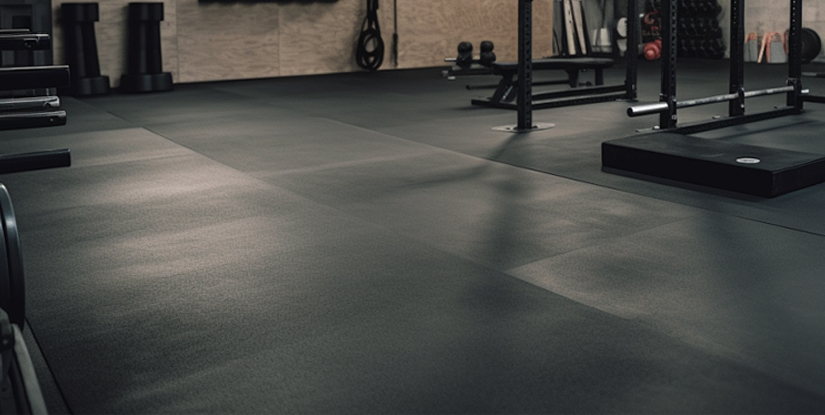Best Mat for Under Treadmill on Carpet — Protection, Noise Reduction & Stability

Choosing the Right Mat for Under a Treadmill on Carpet
Installing a treadmill on carpet requires more than simply placing the equipment on the surface. A purpose-built treadmill mat protects both the machine and the carpet, improves stability, reduces noise and vibration, and simplifies maintenance. This guide outlines the characteristics, materials, sizing, and installation tips to help you select the optimal mat for a treadmill used on carpeted floors.
Why Use a Mat on Carpet?
- Floor protection: Mats prevent crushing, indentations and fiber damage caused by treadmill feet and repetitive loading.
- Noise and vibration reduction: Proper mats dampen impact, reducing noise transmission through the carpet and subfloor.
- Equipment stability: High-density mats distribute weight and reduce lateral movement during use.
- Dust and debris control: Mats make it easier to clean and collect lint that would otherwise accumulate beneath the treadmill.
- Longevity: Mats protect both the treadmill frame and the carpet, minimizing premature wear.
Key Material Options
- Rubber (recycled or virgin): Dense, durable, and excellent at dampening vibration. Best for heavy treadmills and high-traffic use.
- EVA foam: Lightweight and economical. Provides cushioning but less effective for heavy equipment or long-term compression resistance.
- PVC/vinyl: Water-resistant and easy to clean; effective for light-to-moderate weight but can transfer more vibration than rubber.
- Cork-composite: Offers natural vibration absorption and is environmentally friendly; typically combined with rubber backing.
- Interlocking tiles: Flexible configuration for large or irregular areas; choose high-density tiles designed for gym equipment to avoid bottoming out.
Thickness and Density Considerations
Thickness alone is not sufficient. Choose a mat with adequate density to resist compression under the treadmill's weight. For carpeted installations:
- Low-pile carpet: 3–6 mm dense rubber or 6–12 mm high-density EVA may suffice.
- Medium/high-pile carpet: Prefer 6–10 mm dense rubber or specialized anti-vibration mats designed to distribute load across a broader area.
- Commercial-grade or heavy treadmills: Opt for 8–12 mm thick rubber or multi-layer mats combining foam and rubber for maximum durability and stability.
Size and Fit
A mat should extend beyond the treadmill footprint by at least 6–12 inches on all sides to catch debris and prevent edge curling. For longer machines or supplemental stretching areas, add extra length. If the treadmill will be moved occasionally, choose a mat that's large enough to keep the front and rear feet consistently on the surface.
Anti-Slip and Edge Treatment
On carpet, anti-slip properties and beveled edges are still important. Mats with a textured underside or integrated anchoring can reduce lateral movement. Beveled edges minimize tripping hazards and prevent carpet damage along the perimeter.
Installation Best Practices
- Clean the carpet: Remove dust and debris before laying the mat to ensure full contact and reduce wear.
- Place the mat, then the treadmill: Position the mat first to avoid indentations during alignment.
- Check level and feet placement: Ensure all treadmill feet rest fully on the mat surface; use shims recommended by the manufacturer if needed.
- Allow acclimation: Some materials expand or flatten after a period; give the mat 24–48 hours before intense use.
Maintenance and Longevity
Regularly vacuum under and around the mat to prevent debris buildup. Clean rubber mats with mild detergent and water; avoid harsh solvents that degrade the material. Rotate or shift the mat periodically to distribute compression evenly and inspect for wear. Replace mats showing permanent compression, cracks or significant thinning.
Environmental and Health Considerations
Choose mats that are low-VOC and free from harmful plasticizers when possible. Recycled rubber options reduce environmental impact, but verify manufacturing standards for odor and chemical content. For allergy-sensitive environments, mats that resist mold and mildew and are easy to clean are preferable.
Buying Checklist
- Measure treadmill footprint and add peripheral clearance.
- Match mat thickness and density to carpet pile and treadmill weight.
- Prioritize materials rated for gym equipment and anti-vibration performance.
- Confirm manufacturer warranty and compatibility with your treadmill model.
- Account for indoor air quality: choose low-VOC and odor-controlled products.
Cost vs. Value
Higher upfront investment in a dense rubber or multi-layer mat often results in better protection, reduced noise and longer lifespan compared with cheaper foam options. Consider the cost of potential carpet repair, treadmill service due to vibration-related wear, and noise mitigation when evaluating value.
Frequently Asked Questions
- Q: Is any mat better than none? — A: Yes; any quality mat offers protection and reduces noise compared to direct contact.
- Q: Can I use a yoga mat? — A: No; yoga mats are too thin and will compress, offering poor protection and stability.
- Q: Will a mat prevent carpet indentations? — A: It reduces indentations by distributing load but may not eliminate them on very soft or old carpet.
- Q: Do I need a mat for a folding treadmill? — A: Yes; even folding models benefit from protection and reduced vibration.
- Q: How thick should a mat be for a heavy treadmill? — A: Aim for 8–12 mm high-density rubber or a multi-layer solution.
- Q: Are interlocking tiles suitable for carpet? — A: Only if they are high-density and designed for equipment use; otherwise they may compress unevenly.
- Q: Can a mat reduce motor noise? — A: It can dampen vibration-related noise but not mechanical motor noise from the unit itself.
- Q: How do I clean the mat on carpet? — A: Lift and vacuum beneath regularly; clean the mat surface with mild soap and water as recommended.
- Q: Will a mat void my treadmill warranty? — A: Generally no; check manufacturer guidelines for specific warranty conditions.

